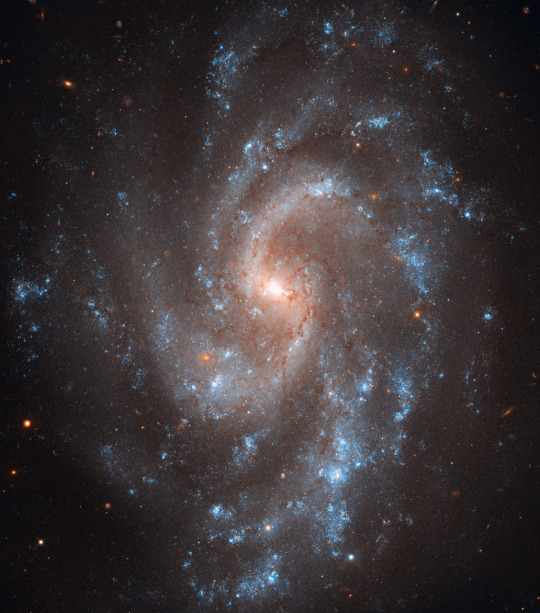#cephid variables
Explore tagged Tumblr posts
Text

Some stars pulse, becoming brighter and and dimmer. A certain type, known as Cepheid variable stars, brighten and dim on regular schedules. This spiral galaxy, NGC 5584, contains over 600 of them. They’re useful for studying great distances in space. Credit: Hubble/NASA, ESA.
#space#astronomy#stsci#science#nasa#universe#hubble#hubble space telescope#hubble telescope#esa#galaxy#cephid variables
172 notes
·
View notes
Text
Help with an astronomy problem
Quick question to anyone who knows Astronomy.
I had a question in my homework that asks to arrange the following measures (Parallex, Spectroscopic Parallex, Hubble Law, Cephid Variable method, tully-fisher method) from 1 (can only measure nearby distances) to 5 (can measure the furthest).
I've been on this problem for like a half hour going through my notes and articles and I've come up with nothing.
Any ideas on what it might be?
0 notes
Photo

Astronomers found 250 pulsating stars known as Cepheid variables in galaxy NGC 5584. These stars are used as reliable distance markers to measure the universe���s expansion rate. Cepheid variables pulsate at a rate closely linked to their intrinsic brightness (brighter stars pulsate more slowly), making them ideal for measuring distances to relatively nearby galaxies.
Henrietta Swan Leavitt discovered this characteristic of Cepheid variables after studying thousands of variable stars in the Magellanic clouds.
Credit: NASA, ESA, A. Riess (STScI/JHU), L. Macri (Texas A&M University), and the Hubble Heritage Team (STScI/AURA).
#hubble space telescope#cephid variables#galaxy#henrietta swan leavitt#stsci#astronomy#space telescope#space#hubble
2 notes
·
View notes
Text
❣️💛❤️

Some stars pulse, becoming brighter and and dimmer. A certain type, known as Cepheid variable stars, brighten and dim on regular schedules. This spiral galaxy, NGC 5584, contains over 600 of them. They’re useful for studying great distances in space. Credit: Hubble/NASA, ESA.
#nasa#astronomy#space#hubble#gods creation#universe#beauty#NGC 5584#Cepheid variable stars#hubble space telescope#galaxy#hubble telescope#cephid variables
172 notes
·
View notes